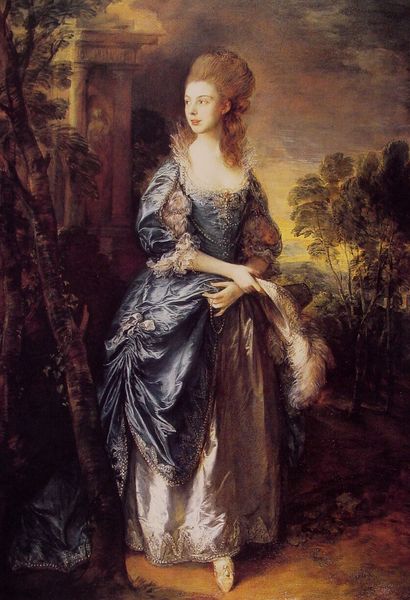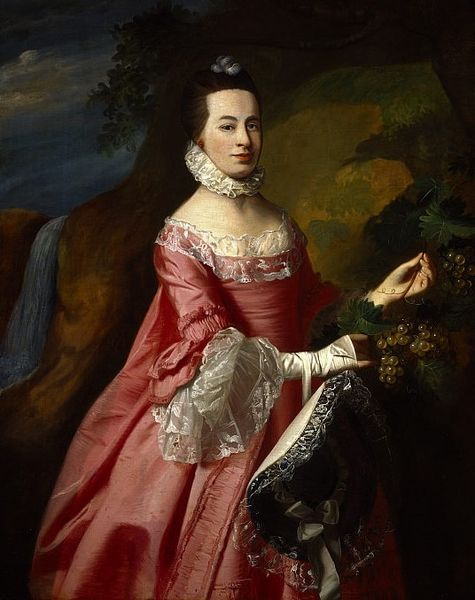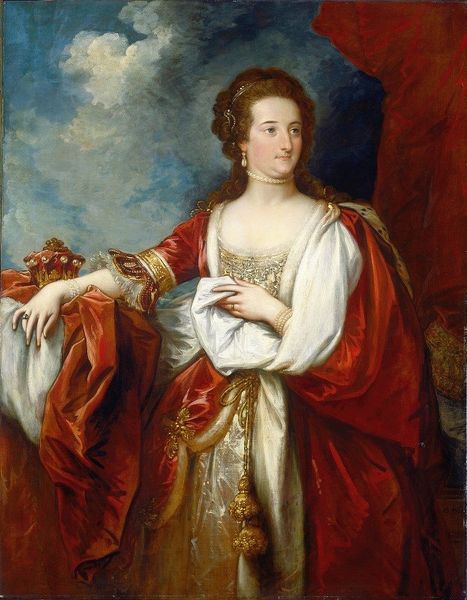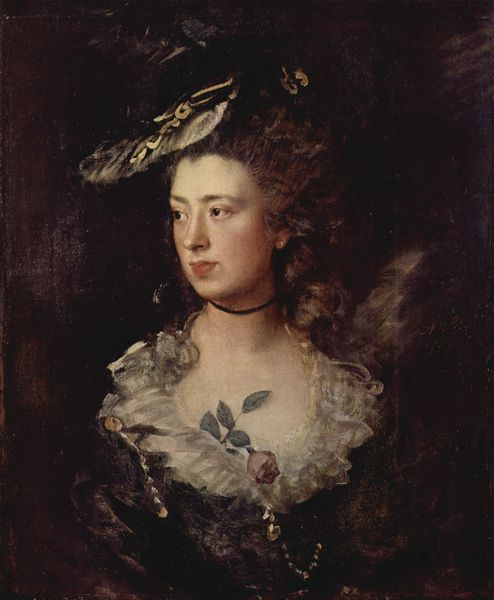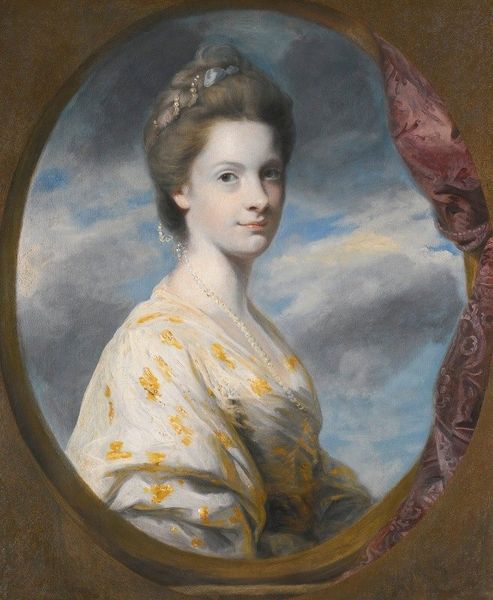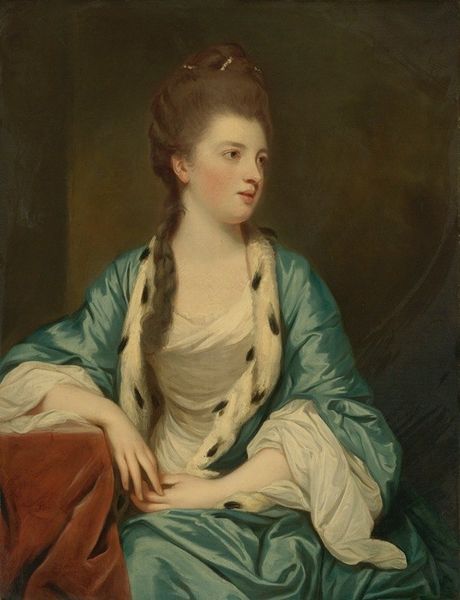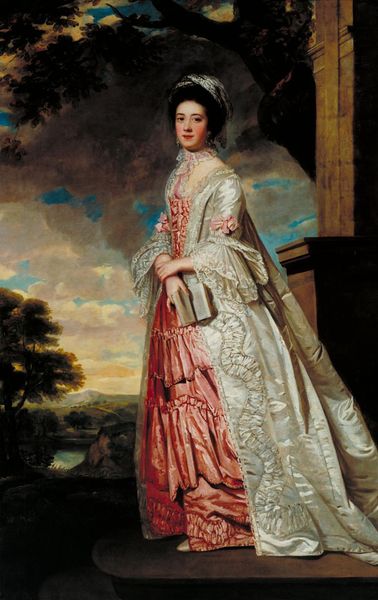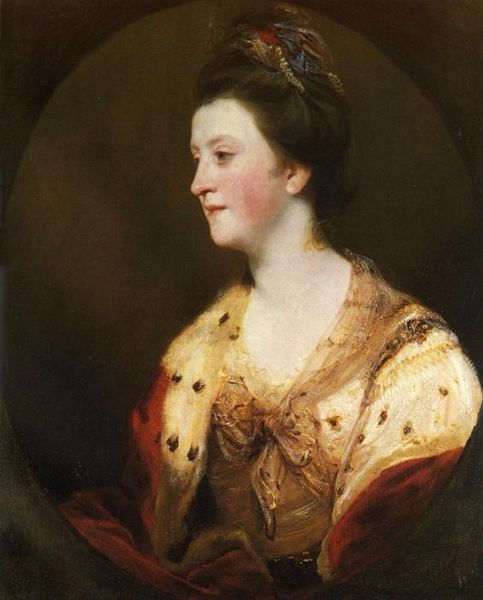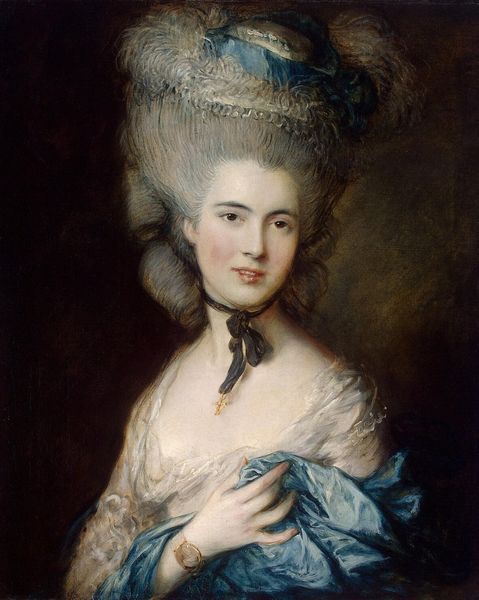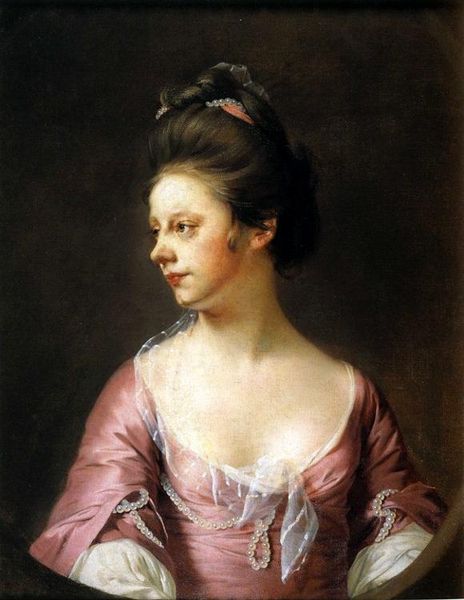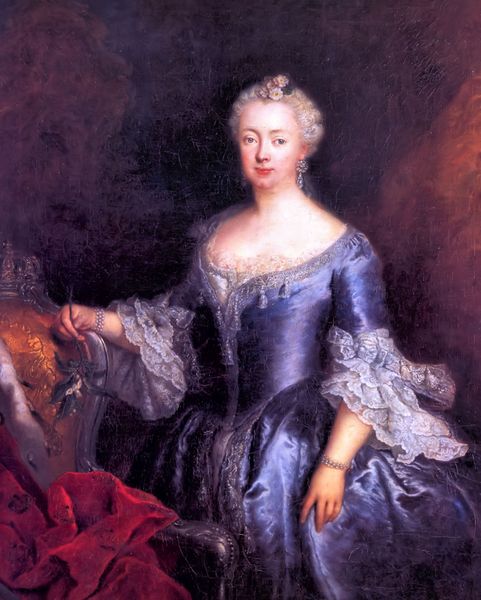
painting, oil-paint
#
portrait
#
baroque
#
painting
#
oil-paint
#
figuration
#
history-painting
#
academic-art
#
female-portraits
#
realism
#
rococo
Dimensions: 127 x 102 cm
Copyright: Public domain
Curator: Looking at this canvas, we're presented with "Lucy, Lady Strange," a portrait painted around 1755 by Joshua Reynolds. He employed oil paints to depict a woman of apparent social standing. What are your first thoughts? Editor: My initial impression is that she's a figure caught between formality and invitation. Her gown shimmers, suggesting opulence, but there’s a softness in her gaze and the slight extension of her hand feels less like a command and more like a… well, perhaps an invitation? Curator: Reynolds was a master of portraying the British elite. What’s compelling about this painting is that Lady Strange was, indeed, an interesting figure, even beyond her aristocratic title. Editor: Her stance projects a confidence, despite the gentleness I observed earlier. I am trying to decode her symbolism through the use of her dress, and particularly how light plays across it. It strikes me as both modern and ethereal. Are those deliberate contradictions intended to evoke… Curator: Reynolds often borrowed from historical styles while also trying to establish a distinctive British school of portraiture. This painting serves not only as a record of Lady Strange’s likeness but also subtly asserts the social hierarchy of the time. Portraiture like this did much to confirm one's status. It publicly affirmed a certain type of position and legitimacy. Editor: Yet, beyond that official role, the shimmering quality of her dress, and that slight blush on her cheeks seems to reveal a deeply personal image, hinting perhaps at emotionality beyond that which she could show directly. I wonder if there's some attempt here to depict aspects of identity that otherwise have no place in society... or no recognition. Curator: Such interpretations have flourished. Reynolds walked a delicate line in flattering his patrons while hinting at their individuality. As a founder of the Royal Academy, his influence solidified the conventions of academic art and the expectations placed upon portraiture for generations. In its way, this picture helped codify the look and feel of elite visual representation in Britain. Editor: Which may explain why, even now, looking at the painting, I feel a strong pull toward… not just her as an individual, but as a representation of layered historical identities... that are very much alive and influential today. The echoes of those dynamics and aspirations still resonate, creating this sense of longing, even aspiration, for worlds and identities that might only exist in symbols and imagination. Curator: It is precisely in that resonance between representation and reality, expectation and truth, that "Lucy, Lady Strange" retains its capacity to move and intrigue us.
Comments
No comments
Be the first to comment and join the conversation on the ultimate creative platform.
